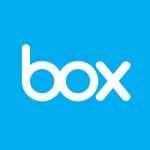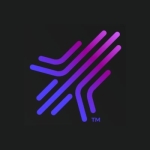What is our primary use case?
We've been in the FileNet business for 25 years and we have found that 80 percent of our customers use FileNet for Accounts Payable processing. That's the single biggest pain point that larger customers are trying to resolve, uniformly, across industries: ingesting invoices, matching them up with purchase orders, doing the three-way match with receivers - if they're a manufacturing or distribution outfit - and then, potentially, if possible, automating the approval and payment of those invoices so nobody has to touch them. Then, they can focus on approvals and touchpoints only when they have to, and escalate when they need to based on grants of authority and delegate if somebody's not there. They can also make sure they get their prompt-payment discounts and the like.
The other big use-case area is always compliance: Records retention, how do they prove that they're complying with policies and procedures and with regulatory issues - HIPAA, PII, etc.
How has it helped my organization?
In terms of how this product improves the functionality of an organization we work with, the Accounts Payable scenario is one. Let's say you're a high-volume purchaser, a retail operation, and imagine that you are getting paper invoices for every case of pineapple and every case of Planters Peanuts that you are getting, and every one of those invoices has to be filed in a filing cabinet. Now instead, we'll scan those in, they get filed automatically, and you trash the paper. And you can find them when you need to find them.
Probably the best example of efficiencies that we've seen was, we worked with a port authority. They get in several large container ships a day that they have to get unloaded. Their customers are either the consignees or they're the trucking companies that move the containers on and off the dock. Every ship that comes in gets a voyage file. When they billed their customers, if a customer called in with a question, they had to go find that voyage file. If somebody else had that file, the person looking for it couldn't answer the question. They were running a first-call resolution rate of 15 percent or less. When we took all the voyage files and started scanning them, putting them online, they raised their first-call resolution rate to over 80 percent. If you resolve their question faster, they pay you faster, and that's money in the bank.
What is most valuable?
The way that FileNet sets itself apart is along a couple of different dimensions. The first is there aren't very many ECM solutions that scale properly, both up and out. We have customers who hold billions of documents. There aren't very many that can scale that far, and that can also scale out so that they can handle lots of users, lots of documents, and that understand how to handle external users.
Then there are security issues. Everybody ties into Active Directory and things like that, but on top of that are the extra layers of security for encryption, so they can meet standards required by PCI and by HIPAA: encryption at rest, encryption in flight, encryption in the database, all together. There are really only three products on the market that know how to do that, and FileNet is one of them.
What needs improvement?
First of all, let's be clear, it's a relatively mature product. It's been around, it's been finely-tuned to handle the vast majority of what customers want it to handle. Most customers probably only utilize 20 to 30 percent of the feature functionality.
In terms of functionality, what customers might be looking for is a little more in terms of native-records retention. Records Management is an add-on product. If there were just a little more of that built into the core functionality, that would be helpful. Just like when you set up the document type or the document class, it would be good to be able to indicate the retention for this data. By being able to turn that on, customers might more often default to doing record purges rather than keeping everything forever. But that's just a small item.
How is customer service and technical support?
We're fully certified to provide first-call technical support to our customers, which we do for the majority of our customers. Our customers like doing that with us because instead of logging into IBM's site and opening a PMR and all that, they call me and say, "Fred, remember that thing we saw two weeks ago, well it happened again. What do we do about it?" And because I have to live with the problem, I don't first have to ask them what version they're running, etc. We can solve it much more quickly.
On the other hand, IBM's technical support itself is very professional, very capable. You have to learn how to work with them. We know what they want. Before we even open a PMR, we go collect what we know they will want and we send it to them. When they say, "Okay, where's all this information?" we tell them to look at the attachment. They go off and we get a resolution more quickly that way.
How was the initial setup?
It's a pretty complex product to set up because it has so many touchpoints. You have to integrate with your Directory Services, you've got a large database component, you've got a large web services component, you've got a large storage component, and you've got a big security component. At the same time, you've got an application server that you have to set up. By nature, it's a fairly complicated setup, it's not for the faint of heart.
What other advice do I have?
We've been committed to this product for a long time. We like the product a lot. It's top of the line, it's robust, it's reliable, as long as you implement it the right way, which takes some training and some time. You have to know where the bodies are buried. A lot of people make mistakes when they first do it. We did, we learned, but we did it years ago. It's an industrial-strength, enterprise-class product and they don't come much better.
Disclosure: My company does not have a business relationship with this vendor other than being a customer.













